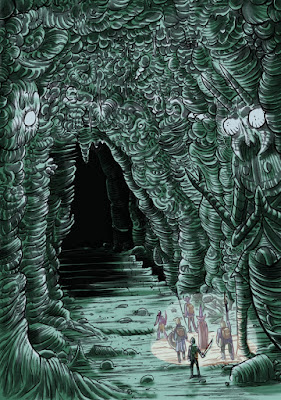I'm sure there are the exceptions, but it seems like that Gygax-approved secondary goal of dungeoncrawling is to clear dungeons to make the land safe for decent folk or something like that. I don't know how much that's that's done these days, but at least dungeon rooms and levels are cleared to allow safe havens/base camps.
What if the dungeon were so alien that sort of thing were unlikely? A dungeon could be looted, but it never could be tamed. This wouldn't mean that the dungeon is static or unchangeable by adventurers, just that it would always retain its essential, deadly, character.
I've been reading The Vorrh by Brian Catling, a novel which has at its center (sort of) the eponymous, immense, ancient forest that is steals people's memories and is supposedly uncrossable. I'm also thinking of the toxic, alien nature of the Zones in Roadside Picnic.
Maybe a mythic underworld as hostile as either of these, would be a bit too much of a killer dungeon (but then again, maybe not) but some movement in this direction might be interesting. In both cases, the appropriate sort of preparation might be key. In the Roadside Picnic case, that means good intel and appropriate gear. In the case of the more mystical Vorrh, it might involve a separate quest to get the needed knowledge, blessing, or key.
Philotomy in his off-quoted "Musings" got it, particularly if we go light on "versimilitude" and allow just enough "internal consistency" for player choices to be meaningful:
"...a megadungeon should have a certain amount of verisimilitude and internal consistency, but it is an underworld: a place where the normal laws of reality may not apply, and may be bent, warped, or broken. Not merely an underground site or a lair, not sane, the underworld gnaws on the physical world like some chaotic cancer.
It is inimical to men; the dungeon, itself, opposes and obstructs the adventurers brave enough to explore it."



















